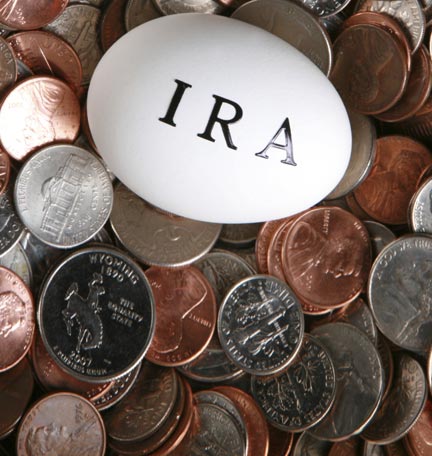5 retirement plans business owners should consider
Selecting the appropriate retirement plan for your business can help you attract and retain key employees while potentially providing tax savings.
You probably didn’t launch your company thinking about retirement plan options — and digging into the intricacies of the tax code to determine the most effective plan isn’t likely to be at the top of your priority list. Still, that effort could pay off. Choosing a solid retirement plan could be beneficial to your entire company, and it may help you attract, motivate, and retain the people who help your business thrive.
While the contribution limits, costs, and other aspects of different retirement plan types can be daunting, you don’t need to focus on particulars right away, says Ryan Sladek, Head of Regions Institutional Sales. “Start with what you want to achieve,” says Sladek, who suggests asking yourself several questions. Are you looking to lead by example, contributing on behalf of your employees? Or do you want to motivate them to save? How fast is your company growing? Account for those answers, along with other variables, as you weigh the differences among plans.
Simplified Employee Pension (SEP) IRA
If your business is small or you’re the only employee, a SEP IRA allows you to contribute up to a yearly maximum — $70,000 in 2025, or 25 percent of an employee’s compensation, whichever is less. You can vary the percentage of your contribution from year to year or skip a year if funds are tight. You have until the extended due date of your tax return to set up a plan and make contributions, so you can calculate your profits before you decide how much to contribute.
Keep in mind, a SEP IRA doesn’t allow your employees to put in their money, and you generally have to contribute the same percentage of everyone’s salary, including yours.
Savings Incentive Match Plan for Employees (SIMPLE) IRA
SIMPLE IRAs are generally a good fit for a business with 100 employees or fewer. With a SIMPLE IRA, your employees can opt to make their own contributions annually — as much as $16,500 in pre-tax earnings (or a $20,000 maximum for ages 50 to 59 and $21,750 maximum for ages 60 to 63).
However, there’s not as much flexibility with this type of retirement plan. You will have to match each employee's contributions of up to 3 percent of the employee's compensation every year — or make nonelective contributions of 2 percent of each eligible employee’s compensation instead.
If there’s a lull in your business, however, you are allowed to reduce your matching contribution to 1 percent as often as twice in five years.
Solo 401(k)
If you — or you and your spouse — are your only employees, consider a solo 401(k) (also known as the individual 401(k), the self-employed 401(k) or the one-participant 401(k) to use the preferred term of the IRS). This account lets you set aside aggregate contributions of up to $70,000 for those under 50 and $77,500 for those age 50-59 and 64-plus in 2025. For ages 60 to 63, your aggregate contributions can reach $81,250 in 2025.
However, the amount you will be able to contribute might be different than the amounts above because with a solo 401(k), you can make contributions as the employee and as the employer. Each part of that has a different limit.
You can contribute elective deferrals of up to an annual contribution limit of $23,500 in 2025. If age 50 or older, you could contribute an added $7,500 in 2025, and those 60 to 63 years old can contribute an additional $11,250 in 2025 instead of the $7,500. Then, as the employer, you can make nonelective contributions up to 25 percent of compensation as defined by the plan.
You decide how much to contribute. “The only downside is that once assets in the plan exceed $250,000, you’ll need to file an annual report with the IRS,” says Sladek.
Employer-sponsored 401(k)
Companies with any number of employees might consider offering employer-sponsored 401(k) accounts. With this plan, your employees can decide how much salary to defer and you can choose to contribute an additional amount on their behalf, often a match on a portion of their contributions.
Due to the costs and complexity of setting up and administering an employer-sponsored 401(k), consider working with your wealth advisor and a benefits consultant, who can help you make sure this plan is your best option and meets your goals, Sladek says.
Cash Balance Pension Plan
This plan turns the usual retirement savings process on its head. Rather than looking at how much you and your employees contribute, it starts with the amount of the retirement benefit you want and then calculates what it will take to get there. That goal determines how much your company must contribute. These amounts are likely to exceed contribution limits for other plans by a hefty margin, but can turbocharge savings for owners and their employees.
You’ll need an actuary to generate annual participant statements and to file detailed reports with the IRS. The contribution limits for these plans increase with age, so review the most recent regulations for cash balance plans. Your company, or an investment manager of your choice, is charged with generating sufficient funds to provide the guaranteed benefit amount.
This retirement plan can be a good fit for companies with high-income owners who want to beef up retirement savings quickly. “It’s ideal for physicians, attorneys, engineers, or architects — private groups looking to maximize their tax-deferred savings,” says Sladek, who notes that a cash balance pension plan can be paired with an employer-sponsored 401(k) to allow even greater savings.
Whichever type of plan you choose now, expect to revisit your options within a few years, Sladek says. “You may outgrow your plan and need to step up to something more comprehensive,” he explains. “Then, as now, this process is about defining your goals and identifying the best way to reach them.”
Connect with a Regions institutional strategist to:
- Learn how we can help guide your organization’s retirement program.
- Explore how much you would need to fund your retirement goals.
Want to get started with wealth planning as a business owner?
Our wealth management guide can help you take the first step.






